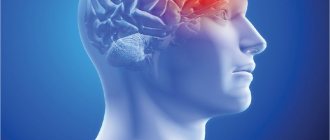1. How does dizziness manifest in osteochondrosis?
2. How are dizziness and cervical osteochondrosis related?
2.1 The main causes of the development of osteochondrosis
2.2 The main causes of dizziness in osteochondrosis
3. Clinical picture
4. Diagnostics
5. How to treat?
6. Prevention
Without a doubt, one of the most common symptoms is dizziness. This symptom occupies a leading place in prevalence and is associated with a number of pathological conditions and diseases, which indicates its nonspecificity; however, there are some types of dizziness that occur only in certain conditions, for example, cervicogenic dizziness with pathology of the cervical spine. A symptom such as dizziness can occur with a wide range of neurological, vascular and mental diseases and require a mandatory diagnostic and therapeutic approach, as it is often a symptom of a serious and even life-threatening disease.
The appearance of systematic dizziness occurs in more than 35% of people living in large populated areas. Very often, dizziness accompanies neurological and vascular diseases and can be a harbinger of the development of transient or acute cerebrovascular accident. In more than half of the cases, the occurrence of constant sluggish dizziness is formed against the background of diseases of the musculoskeletal system.
How does dizziness manifest in osteochondrosis?
Dizziness, or synonymous with vertigo, is a pathological feeling of uncertainty in assessing the position of one’s body in space, while the sick person feels as if the objects surrounding him are rotating around him, less often the sensations are of the opposite nature, i.e. the feeling of rotating your own body around surrounding objects. These sensations lead to uncertainty in one’s actions, disrupt motor skills and cause awkwardness in the patient’s movements. With fairly severe manifestations of dizziness, in addition to the main symptom - uncertainty in movements, neurological symptoms are added in the form of nausea and even vomiting with severe dizziness. The patient also experiences some autonomic disorders, such as:
- Increased heart rate and pulse;
- Unstable blood pressure;
- Increased sweating, especially of the upper extremities and face;
As dizziness increases, all of the above accompanying symptoms also progress proportionally and become more pronounced.
In neurological practice, it is very convenient to divide dizziness into several main types, depending on the pathogenetic mechanism of its formation. The following types of vertigo are distinguished:
- Systemic dizziness. Such dizziness has a vestibular cause and occurs when moving the head. The patient feels dizziness in the form of falling or continued rotation in response to head movement. Very often, systemic dizziness is complemented by severe hearing problems.
- Syncope or presyncope. Dizziness is a common symptom and warning sign of impending loss of consciousness. Dizziness occurs and increases along with a general deterioration in clarity of consciousness. The person becomes unstable, loses balance, and notices cloudiness or darkening in the eyes. If this condition occurs, the victim may fall and cause serious injury to himself.
- Neuralgic cerebrogenic dizziness. It occurs as a result of organic pathology with localization in the parts of the brain responsible for balance. For example, when the cerebellum is damaged in a person suffering from a stroke or traumatic brain injury, cerebellar ataxia occurs, one of the manifestations of which is constant dizziness. In other cases, cerebrogenic imbalance occurs due to paresis or paralysis, but in this case the feeling of dizziness is false.
- Cervicogenic dizziness. Such dizziness occurs with pathology of the cervical spine, most often with osteochondrosis. The formation of a feeling of awkward body position in space occurs as a result of a violation of proprioceptive sensitivity in the peripheral nervous system. It is the occurrence of dizziness of a cerebrogenic nature that is most often observed in patients.
The vestibular system and the main features of its functioning
The vestibular system is responsible for maintaining body balance when performing all movements, both voluntary and involuntary, as well as when changing body position or posture. This is achieved due to its close relationship with other parts of the nervous system, in particular the visual, cerebellar, proprioceptive, extrapyramidal, cortical and spinal.
When the body is faced with the need to maintain balance, the nerve impulse initially originates in the peripheral receptors of the semicircular canals of the labyrinth, which are part of the inner ear. From them, through the vestibular nuclei of the brain stem, they are transmitted to other systems and turn on complex mechanisms for maintaining balance at each individual moment in time when performing a particular movement. This ensures maintaining balance when running, walking, bending, changing direction and speed, etc.
Of great importance in this mechanism is the transmission of nerve impulses from the lateral vestibular nuclei to the motor ones located in the spinal cord. This is realized through the vestibulospinal and reticulospinal tracts, as they are responsible for the degree of tonic tension of skeletal muscles. They trigger a mechanism for reducing the tone of some muscle groups, while simultaneously increasing the tone of others in accordance with the characteristics of changes in body position. This is called reciprocity or reciprocal innervation. This ensures stability and balance.
How are dizziness and cervical osteochondrosis related?
Osteochondrosis is one of the most common and frequent causes of dizziness. With this disease, damage occurs to the cartilage tissue of the intervertebral discs of the cervical spinal column as a result of a violation of their nutrition or trophism. As a result of disturbed metabolism, dystrophic processes are formed in cartilage tissue, which leads to a decrease in the volume of cartilage and its destruction, as a result of which the spinal column loses a significant degree of its shock-absorbing properties. The load on the bodies of the cervical vertebrae increases, which leads to their mechanical trauma and subsequent destruction. Bone growths or spines appear on the vertebrae, the mobility and mobility of the vertebrae is significantly reduced, and their height also decreases, which leads to the gradual involvement of spinal cord neurons and their processes in the inflammatory process, which exit through the lateral openings between the vertebrae in the form of sensory and motor nerve fibers as part of nerve roots. In the absence of timely diagnosis and treatment, osteochondrosis progresses and leads to the development of serious complications in the form of organic damage to nervous tissue, one of the symptoms of which is the development of cervicogenic dizziness.
The main causes of the development of osteochondrosis
Osteochondrosis is a multifactorial disease and it is not possible to identify any specific factor leading to its occurrence. However, among a wide range of pathogenic factors, several leading factors can be identified, which include:
- Hereditary genetic predisposition;
- Systematic long-term physical inactivity or, conversely, increased load on the musculoskeletal system;
- Dysmetabolic disorders;
- History of chronic infectious diseases.
All of the above factors can lead to the development of osteochondrosis, both individually and in combination. When exposed to two or more factors from the above list, the risk of gradual formation of osteochondrosis increases significantly.
The main causes of dizziness in osteochondrosis
Whether dizziness can occur with cervical osteochondrosis is a complex question. Of course, in most clinical cases this symptom is present, but there are also situations when osteochondrosis progresses in a latent form without dizziness and other vegetative manifestations. It is important to immediately note that only osteochondrosis of the cervical spine is accompanied by the appearance of the symptom of dizziness. As mentioned above, osteochondrosis leads to a decrease in the area and volume of the intervertebral discs, which leads to its flattening and compression or compression of the spinal nerve endings, while in addition to the direct effect on the nervous tissue, compression of the vertebral or vertebral arteries occurs, which entails a chronic impairment of oxygenation nervous tissue of the spinal cord and medulla oblongata. The complex effect of chronic ischemia and trauma to nerve fibers leads to increased sensitivity and irritation of autonomic nerve endings, resulting in cervical dizziness.
Causes and risk factors
Oddly enough, the possibility of developing osteochondrosis in humans is due to one of its evolutionary advantages - upright posture: the vertebrae press on each other, and with age, the connective tissue degrades. As a result, in older people this is an almost inevitable process. But there are many factors that contribute to the earlier and more intense development of cervical osteochondrosis:
- First of all, this is a sedentary and sedentary lifestyle, often observed in modern life (office workers, drivers and other “sedentary” professions, TV, long hours at the computer), lack of physical activity
- Tense, unnatural postures while working: for example, at a computer, a person often leans forward, taking a tense posture
- The opposite reason is that the load is too high and unusual for a given person; but even trained athletes, for example, weightlifters, are at risk;
- Any reasons that disrupt a person’s natural posture: uncomfortable shoes, especially high heels, poor sleeping position, flat feet, rheumatism, scoliosis;
- Excess weight, which is often caused by poor diet
- Frequent stress, severe nervous tension, constant overwork
- Local hypothermia
Clinical picture
The symptoms of dizziness in osteochondrosis are specific. As a rule, awkwardness and impairment of motor activity are of minor intensity. The feeling of imbalance is stable and gradually increases as osteochondrosis of the cervical spine progresses. As mentioned above, dizziness is often accompanied by other neurological symptoms, such as headache, nausea and vomiting, hyperhidrosis or increased sweating, weakness and increased heart rate.
In some cases, patients may experience attacks of dizziness with cervical osteochondrosis.
Associated symptoms
The course of cervical osteochondrosis may be accompanied by the development of syndromes that appear along with dizziness. They arise against the background of sensations of swaying on the waves, rising or falling of the body, instability of the surface underfoot, its movement, vibration.
| A syndrome that often accompanies dizziness | Characteristic symptoms |
| Hypothalamic | Fatigue, psycho-emotional instability, decrease or increase in temperature, excessive sweating, increased urination, surges in blood pressure, heart rhythm disturbances |
| Syncopal | Falling, fainting, loss of consciousness, tinnitus, reversible speech impairment, spots and spots flashing before the eyes |
| Pharyngolaryngeal | Problems with swallowing food, water, soreness and “lump” in the throat, weakening of the voice |
| Visual | Fog before the eyes, decreased visual acuity, appearance of luminous moving points, spots, figures, lightning |
Diagnostics
If dizziness appears, especially if the symptom increases, you should not sit idly by. Only a consultation with a qualified specialist and a full diagnostic study will help to conduct a differential diagnostic search and identify a specific pathology. At the Clinical Institute of the Brain there is an entire department dedicated to the treatment of osteochondrosis of the cervical spine and related complications. An integrated approach to diagnosis allows you to accurately assess the severity of neurological disorders and the localization of the pathological inflammatory process. The following diagnostic methods are used at the Clinical Brain Institute:
- Computed tomographic or magnetic resonance imaging study, which allows a detailed assessment of the localization and degree of the inflammatory process in the intervertebral discs and vertebrae.
- X-ray of the cervical spine;
- Ultrasound Doppler mapping of neck vessels;
- Comprehensive analysis of the patient’s vestibular function.
Osteochondrosis? Feeling dizzy? They will help you at the Yusupov Hospital!
To treat osteochondrosis, the Yusupov Hospital uses modern methods of therapy. The Yusupov Hospital employs qualified doctors who have extensive experience in successfully treating this pathology. The patient receives advice from a neurologist, traumatologist, rehabilitation specialist, reflexologist and other specialists who will be necessary to carry out differential diagnosis and make the correct diagnosis. The decision on the choice of therapy is made jointly by doctors. This allows you to choose the most effective treatment that will eliminate pain, eliminate dizziness and improve the patient’s well-being. It is almost impossible to completely cure osteochondrosis. However, after treatment at the Yusupov Hospital, patients experience stable remission and are no longer bothered by unpleasant symptoms. Additionally, you can undergo regular preventive examinations, which will help identify the progression of the pathological process at an early stage and exclude relapse of the disease.
To treat osteochondrosis, the Yusupov Hospital uses an integrated approach, which will include drug therapy, physiotherapy, reflexology, massage, and physical therapy. Medicines are selected based on the patient's symptoms, as well as his general health. The presence of somatic diseases, in particular cardiological and gastroenterological diseases, is taken into account, which is necessary to prescribe safe therapy. Physiotherapy is carried out by experienced doctors who use modern effective techniques to restore the functions of the spine and improve metabolic processes in it. Gymnastics classes take place under the guidance of professional exercise therapy instructors.
The duration of the course of therapy will depend on the degree of damage to the spine, the severity of dizziness and other symptoms. The duration of treatment is determined by the attending physician based on the body's response to the therapy. After completing the main course of treatment, the patient receives recommendations from doctors and can continue rehabilitation at home. If necessary, you can always use the help of specialists from the Yusupov Hospital at any time of the day.
To make an appointment with doctors, get information about the work of the rehabilitation clinic, exercise therapy department, and clarify other information, you can call the Yusupov Hospital.
How to treat?
I feel dizzy with cervical osteochondrosis, what should I do? First of all, you should consult a specialist for advice. Only after the examination can we talk about drawing up an effective treatment plan. Treatment of dizziness with osteochondrosis of the cervical spine consists of complex therapy using both medications and physical procedures. For the purposes of pharmacotherapy, the following groups of drugs are used:
- Non-steroidal anti-inflammatory drugs. They can significantly reduce the amount of inflammation, relieve swelling and, accordingly, compression of the nerve roots and spinal cord. For a more effective effect at the time of therapy, a course of injectable forms of anti-inflammatory drugs is used. The main drugs in this group include: Diclofenac, Ibuprofen, Nurofen and Meloxicam.
- Cerebroprotectors and nootropics are drugs that improve cerebral circulation and metabolic processes in nervous tissue. These drugs include: Piracetam, Cinnarizine, Cavinton or Vinpocetine.
- Chondroprotojectors are means that protect cartilage tissue from destruction. This group of drugs improves the elastic and shock-absorbing properties of the cartilage tissue of the intervertebral disc, thereby relieving compression syndrome.
It is important to note once again that treatment must be comprehensive and complex; only in this case can one hope for a good effect from therapy. For this purpose, in addition to medications, physiotherapy is also used: therapeutic electrophoresis on the neck area, ultrasound and magnetic therapy. The systematic implementation of therapeutic exercises also plays a significant role.
Prevention
In order to prevent the development or progression of osteochondrosis of the cervical spine and associated dizziness, as well as other neurological manifestations, the same complex of physiotherapeutic methods is used. To avoid the development of this disease, it is important to understand that only the absence of pathogenic factors can eliminate the unnecessary risk of developing osteochondrosis and its complications. To do this, you need to change your lifestyle and attitude towards your own health. Such simple things as an active lifestyle, proper nutrition, alternating work and rest significantly reduce the risk of osteochondrosis and its manifestations. Take good care of your body and be healthy.
Clinical Brain Institute Rating: 4/5 — 127 votes
Share article on social networks








